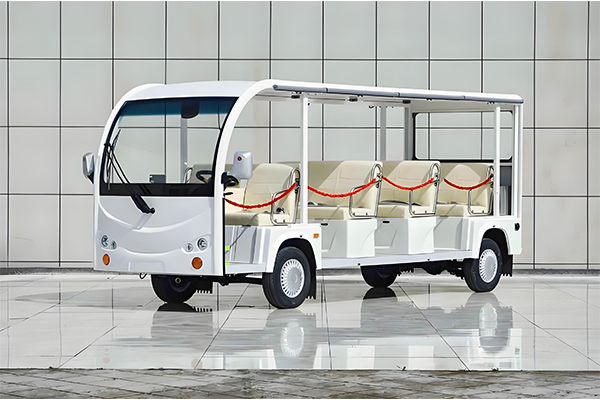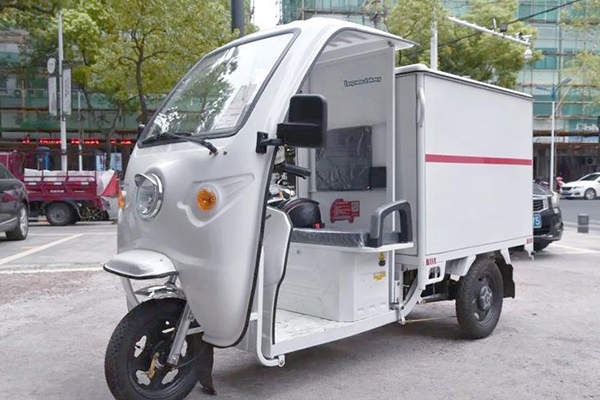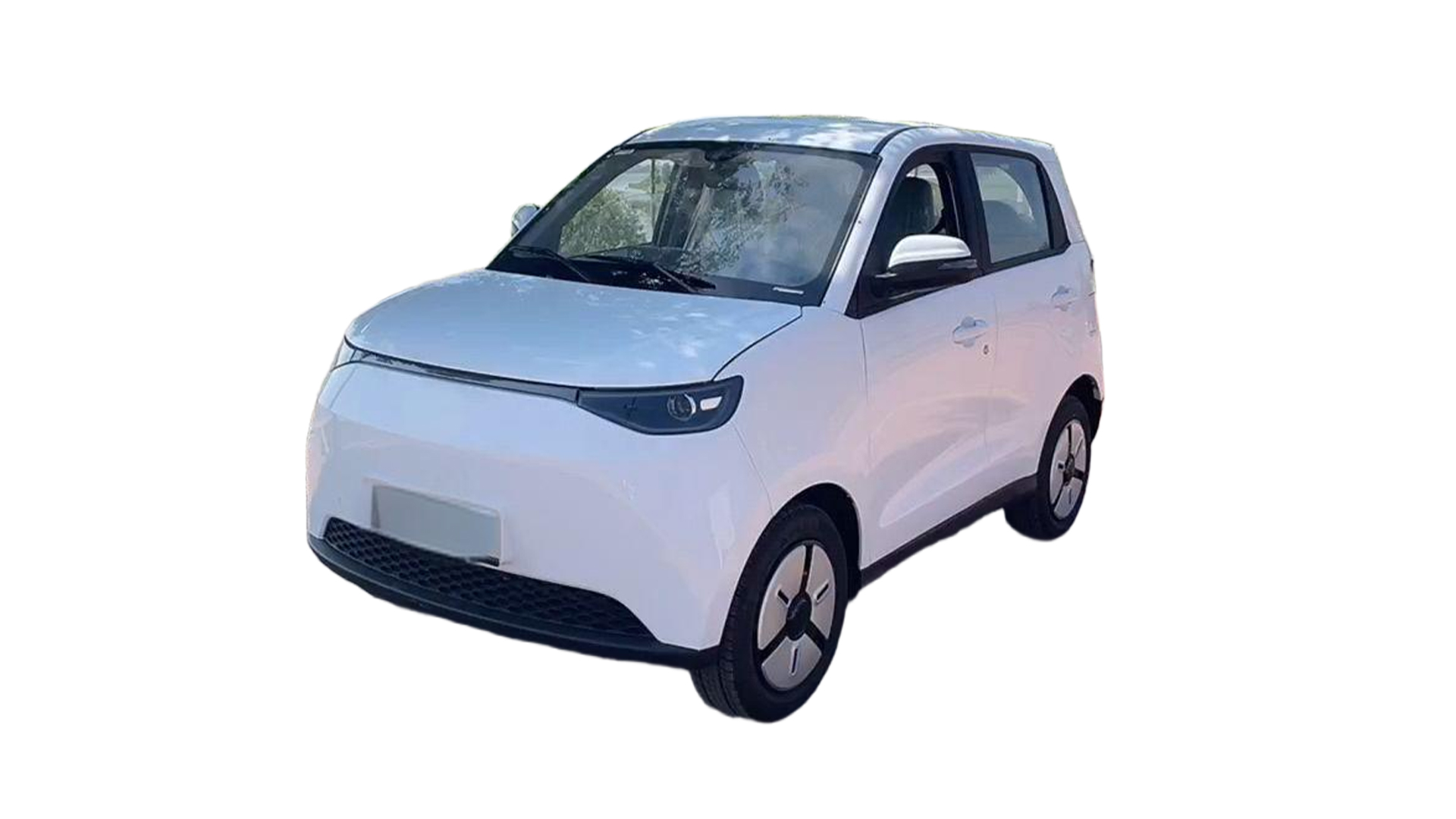An Introduction to Low-Speed Electric Vehicles
Low-speed electric vehicles (LSEVs) represent a revolutionary approach to urban transportation, offering a sustainable alternative to traditional gasoline-powered vehicles for short-distance travel. These compact, energy-efficient vehicles are specifically designed for operation in urban and suburban environments where lower speeds are typical and distances are manageable.
Characterized by their maximum speed of 25-40 km/h (15-25 mph) depending on regional regulations, LSEVs provide an ideal solution for navigating crowded city streets, residential areas, campuses, and industrial complexes. Their compact size allows for easy maneuverability and parking, addressing two of the most significant challenges in urban mobility.
At the heart of every LSEV is its battery storage system, which powers the electric motor and determines the vehicle's range and performance. Modern LSEVs utilize advanced battery storage technologies that have evolved significantly in recent years, offering improved energy density, longer lifespans, and faster charging capabilities.

Technical Specifications & Features
Powertrain & Performance
- Electric motor ranging from 3 to 10 kW, providing efficient power delivery
- Maximum speed of 25-40 km/h (15-25 mph) as per regulatory requirements
- Range of 50-150 km (31-93 miles) on a single charge, depending on battery storage capacity
- Regenerative braking system to maximize energy efficiency and extend battery storage life
- Low maintenance requirements compared to internal combustion engine vehicles
Battery Storage Technology
- Advanced lithium-ion battery storage systems as standard in modern models
- Battery storage capacities ranging from 4 kWh to 15 kWh
- Charging time of 4-8 hours using standard household outlets
- Many models compatible with fast-charging stations for 80% charge in under 2 hours
- Battery storage management systems to optimize performance and extend lifespan
- Battery storage warranties typically ranging from 3 to 5 years
Design & Dimensions
- Compact design with length typically between 2.5 to 3.5 meters
- Width ranging from 1.2 to 1.6 meters for easy maneuverability
- Seating capacity for 2 to 4 passengers depending on model
- Cargo space options for practical urban transportation needs
- Lightweight construction using high-strength, durable materials
Safety & Comfort Features
- Three-point seatbelts for all passengers
- Front and rear bumpers designed for low-speed impacts
- Windshield with safety glass and wiper system
- Basic climate control options in premium models
- LED lighting for improved visibility and reduced energy consumption
- Digital displays showing speed, battery storage level, and range
Applications & Use Cases
Residential Mobility
Perfect for short trips within residential communities, LSEVs provide convenient transportation for errands, school runs, and local visits without the need for a full-sized vehicle.
Their limited speed makes them safe for neighborhood streets, while modern battery storage systems ensure they're always ready for daily use.

Campus & Facility Transport
Universities, corporate campuses, and industrial facilities utilize LSEVs for efficient transportation across large sites. They reduce congestion and lower operational costs.
With reliable battery storage systems, these vehicles can operate throughout the day with minimal downtime for recharging.

Tourism & Leisure
In tourist areas, resorts, and recreational parks, LSEVs offer eco-friendly transportation for visitors, allowing them to explore while minimizing environmental impact.
Many tourist operations appreciate the quiet operation and sustainable battery storage technology that aligns with their green initiatives.

Last-Mile Delivery
For urban logistics, LSEVs provide an economical solution for last-mile delivery of packages and small goods. Their compact size allows access to restricted areas.
With optimized battery storage solutions, delivery companies can complete full routes without recharging, significantly reducing operational costs compared to traditional vehicles.

Maintenance & Security
Municipalities, airports, and large facilities employ LSEVs for maintenance work, security patrols, and staff transportation, benefiting from their efficiency and versatility.
The reliable battery storage in these workhorses ensures continuous operation during shifts, with easy recharging overnight to prepare for the next day's tasks.
LSEVs vs. Traditional Vehicles
Cost Advantages
One of the most compelling benefits of low-speed electric vehicles is their significantly lower operating costs compared to traditional gasoline-powered vehicles. The electricity required to charge an LSEV's battery storage system costs a fraction of the gasoline needed to travel the same distance.
Maintenance costs are also substantially reduced, as electric motors have far fewer moving parts than internal combustion engines. There's no need for oil changes, spark plug replacements, or complex engine tune-ups.
While the initial purchase price of an LSEV may be comparable to some smaller gasoline vehicles, the total cost of ownership over 3-5 years is typically 30-50% lower due to these savings.
Environmental Benefits
LSEVs produce zero tailpipe emissions, making them an environmentally responsible choice for urban transportation. When charged using renewable energy sources, their carbon footprint becomes negligible.
The efficiency of electric drivetrains, combined with advanced battery storage technology, means LSEVs convert a much higher percentage of energy into motion compared to gasoline vehicles, which waste significant energy as heat.
Their quiet operation also reduces noise pollution, contributing to more pleasant urban environments. For communities seeking to reduce their environmental impact, LSEVs represent a practical solution.
Advanced Battery Storage Technology
The evolution of battery storage technology has been instrumental in the development and adoption of low-speed electric vehicles. Modern LSEVs utilize sophisticated battery storage systems that have overcome many of the limitations that previously restricted electric vehicle adoption.
Lithium-ion batteries currently represent the state-of-the-art in LSEV battery storage, offering an optimal balance of energy density, weight, charging speed, and cycle life. These battery storage systems are designed specifically for the demands of low-speed urban transportation, providing reliable performance in various weather conditions.
Battery management systems (BMS) work in conjunction with the battery storage to optimize performance, prevent overcharging and deep discharge, and ensure balanced charging across all cells. This not only maximizes range but also extends the overall lifespan of the battery storage system.
Ongoing advancements in battery storage technology continue to improve LSEV capabilities, with research focusing on increasing energy density, reducing charging times, and developing more sustainable battery chemistries. These innovations promise to make LSEVs an even more attractive transportation option in the coming years.

Regulations & Safety Standards
Regulatory Framework
Low-speed electric vehicles are subject to specific regulations that vary by country and region. These regulations typically define maximum speed limits, weight restrictions, and safety requirements that distinguish LSEVs from full-speed electric vehicles and other motorized vehicles.
In many jurisdictions, LSEVs are classified separately from conventional automobiles, often falling into categories such as "neighborhood electric vehicles" (NEVs) or "low-powered scooters." This classification affects where they can be operated, licensing requirements, and safety standards.
Regulatory bodies are continuously updating standards to address the growing popularity of LSEVs, often focusing on battery storage safety, crashworthiness, and operational boundaries. Prospective owners should familiarize themselves with local regulations before purchasing an LSEV.
Safety Considerations
While LSEVs operate at lower speeds, safety remains a critical consideration in their design and operation. Manufacturers incorporate various safety features specifically tailored to the operating environment of these vehicles.
Battery storage safety is a particular focus, with robust enclosures, thermal management systems, and protection against overcharging and short circuits. These measures ensure that the battery storage system remains safe during normal operation and in the event of accidents.
Other important safety features include reinforced passenger compartments, effective braking systems appropriate for low speeds, and visibility enhancements such as reflective materials and proper lighting. These features, combined with responsible operation, make LSEVs a safe transportation option for their intended use cases.
Future Trends & Innovations
Enhanced Battery Storage
Ongoing developments in battery storage technology will continue to improve energy density, charging speed, and overall lifespan. Solid-state batteries may soon find their way into LSEVs, offering significant advantages over current lithium-ion battery storage solutions.
Smart Connectivity
Future LSEVs will incorporate more advanced connectivity features, including smartphone integration, real-time battery storage monitoring, predictive maintenance alerts, and integration with smart city infrastructure for optimized routing and charging.
Autonomous Capabilities
Given their operating environment and speed constraints, LSEVs are well-suited for early adoption of autonomous driving technologies, particularly in controlled environments like campuses, retirement communities, and industrial facilities.
Market Growth & Adoption
The global market for low-speed electric vehicles is experiencing significant growth, driven by increasing urbanization, rising fuel costs, and growing environmental awareness. This trend is expected to accelerate in the coming decade as battery storage technology continues to improve and costs decline.
Municipalities around the world are recognizing the benefits of LSEVs in reducing traffic congestion, lowering emissions, and improving urban mobility. Many are implementing policies and infrastructure improvements to support wider adoption, including dedicated lanes, charging stations, and incentives for purchase.
As urban populations continue to grow and the need for sustainable transportation solutions becomes more pressing, low-speed electric vehicles equipped with advanced battery storage systems are poised to play an increasingly important role in the future of urban mobility. Their combination of efficiency, affordability, and environmental benefits makes them a compelling choice for a wide range of applications.
Environmental Impact Analysis
The environmental benefits of low-speed electric vehicles extend beyond zero tailpipe emissions. When considering the entire lifecycle, from manufacturing to disposal, LSEVs have a significantly lower environmental impact compared to traditional vehicles, particularly when their battery storage systems are properly recycled.
The energy efficiency of LSEVs, combined with advancements in battery storage technology, means they consume far less energy per kilometer traveled. This efficiency translates directly to reduced greenhouse gas emissions, especially as electricity grids continue to transition to renewable energy sources.
Additionally, the simplified design and reduced material requirements of LSEVs, compared to conventional vehicles, result in lower energy consumption during manufacturing. As battery storage recycling infrastructure improves, the environmental footprint of LSEVs will continue to decrease, making them an increasingly sustainable transportation option.
The Future of Urban Mobility
Low-speed electric vehicles represent a practical, sustainable solution for many urban transportation challenges. Their combination of efficiency, affordability, and environmental benefits makes them an attractive option for short-distance travel in cities, campuses, and communities. As battery storage technology continues to advance, we can expect LSEVs to become even more capable, with longer ranges, faster charging times, and improved performance.
Whether for personal use, commercial applications, or public transportation, LSEVs offer a versatile mobility solution that aligns with the growing global focus on sustainability and reduced carbon emissions. As cities continue to evolve and seek ways to improve quality of life for residents, low-speed electric vehicles will undoubtedly play an increasingly important role in creating cleaner, quieter, and more efficient urban environments.
Learn more